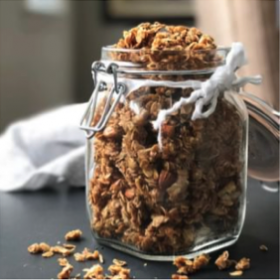Ingredients
Cabbage (all sorts!)
Salt, non iodized
Optional extras:
Carrot
Fennel
Radish
Beetroot
Turnips
Cauliflower stems etc
Optional flavours:
Herbs
Ginger
Garlic
Turmeric
Chilli
Caraway Seeds
Fennel Seeds
Dried seaweed
etc
Summary
Fermenting cabbage and other veggies in their own brine is no new idea, lets just say that. But it’s a simple, delicious and healthful process of preserving the harvest, and an easy introduction to the world of fermentation that will possibly have you completely hooked. The internet and cookbooks abound with information and recipes at the moment, but here is a basic rundown of what happens in my kitchen, to help get the lacto-fermented bubbles going in yours.
One note: big thanks to the legendary Sandor Katz. His enthusiasm and kraut-chi approach got me hooked, and is a playful way to understand the essentials. This very-Sandor-term describes the coming together of sauerkraut and kimchi traditions in a loose, home-style situation such as this, creating a kind of middle place of deliciousness and a starting point to finding your own way. Korea’s traditional kimchi is certainly a very different recipe to a European sauerkraut with caraway seeds eaten on a dense rye loaf, but it’s possible to draw them closer together with a homestyle spicy ferment having kimchi-esque inputs of chilli, garlic, and ginger for a bigger flavour punch. Grated turmeric, radish, carrot, fennel, spring onions… you can cram a lot of diversity into a jar of spicy kraut-chi! And this is about homemade creativity meeting seasonal abundance so use whatever you like and find your favourite combo as you go. Plain or bold, there are no rules at home.
DIY kraut-chi
To make your own fermented veg you’ll need a wide-mouthed glass jar or crock that you can fit the width of your hand in to (crocks are great but not at all necessary). If using a jar, you’ll also need either an outer leaf of cabbage and something heavy like a pestle, or a smaller jar that fits neatly inside the first which you’ll fill with water to act as a weight, keeping the vegetables submerged in their juices.
Chop your cabbage and place in a large bowl, adding enough salt so that when you massage it with your fingers it softens and you can see juices accumulate. A 2% brine is what is commonly recommended, so you can weigh the cabbage you’re using before hand to work that out, but as the moisture content of veggies varies a fair bit a general rule of thumb is 1 heaped Tbsp to a whole head of cabbage.
Anyway, so you’ve mixed the salt into the cabbage and given it a really good massage to draw out the juice. Leave the salted cabbage to soften further while you prepare some other veggies or flavours to add. Grate or thinly slice veggies, and pound up a spicy chilly paste, that’s my routine. Of course you can simple stick with cabbage and a sprinkling of caraway or fennel seeds. Once there’s water running free from the cabbage, mix everything together to taste and start squishing it all in to the jar (work layers at a time), gently pushing out all the air as you go – use your hand or a sturdy wooden implement. You want to end up with a jar of tightly packed cabbage without any air pockets, everything completely submerged by it’s own juices. The weight is then added on top so that nothing is tempted to stick out of the brine and invite surface mould to the party. If you need more liquid to cover, top up with a dash more brine.
Allow it to breathe (a cloth over it will stop bugs getting in) and leave to ferment on the bench, out of direct sun. Usually after a week it starts to get going and will get better from there so have a taste and see how it’s coming along. 2-3 weeks is a good average, but it depends on the room temperature (it’s ideal between 17-22ºc) and how strong a flavour you like. It should have a good tangy punch, a slight fizziness on the tongue and a crunchiness remaining in the veggies. And it should be delicious!! Transfer to other smaller storage jars if necessary and pop your homemade kraut in the fridge, where it will slow right down and sit happily for a very long time if not eaten within the hour. Enjoy liberally with just about anything.
Hints and Tips
Start yourself off with a simple cabbage/salt kraut in a jar, and build your confidence to try adding a whole bunch of veggies and flavours.
The longer you leave the kraut to ferment, the stronger it will taste. So check it regularly and once you are happy with the flavour add a lid, transfer it to the fridge and enjoy from there.


